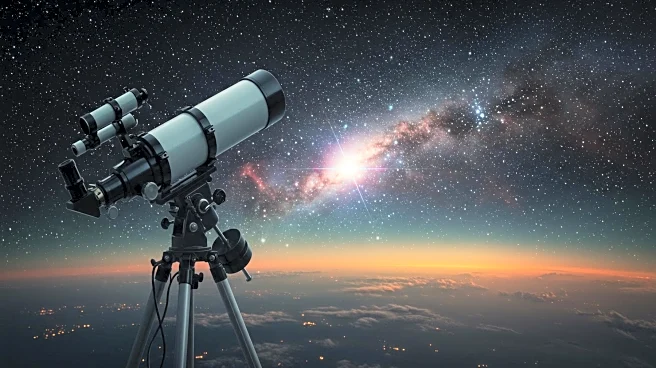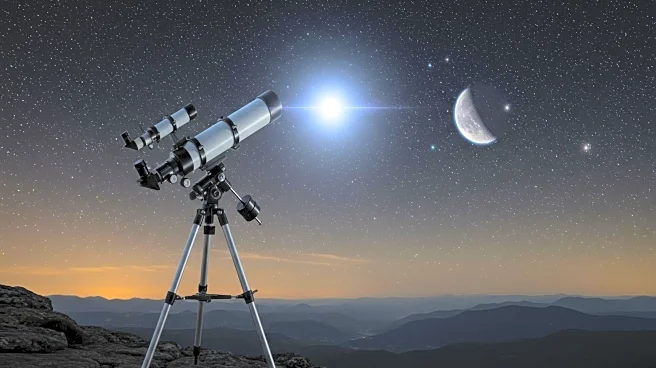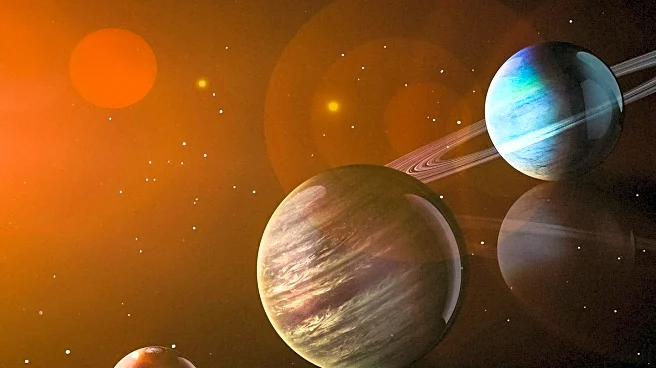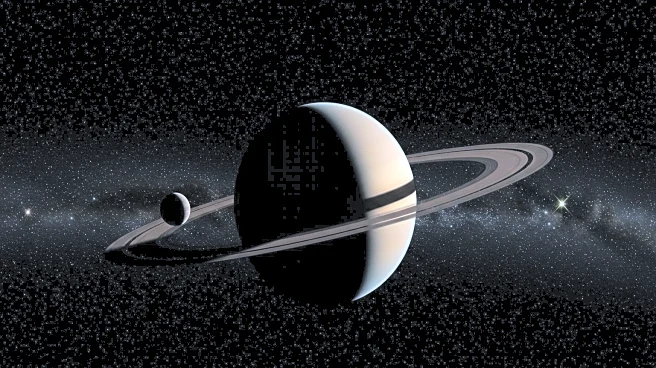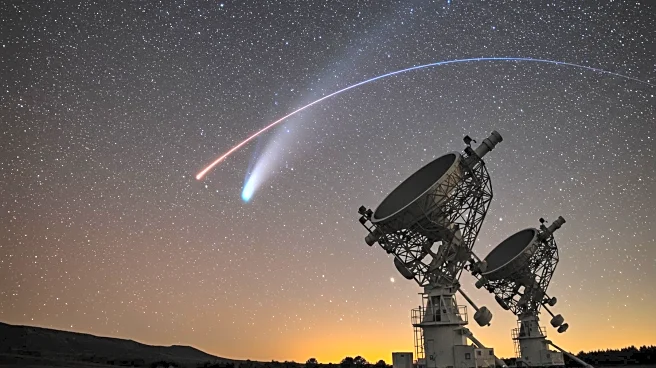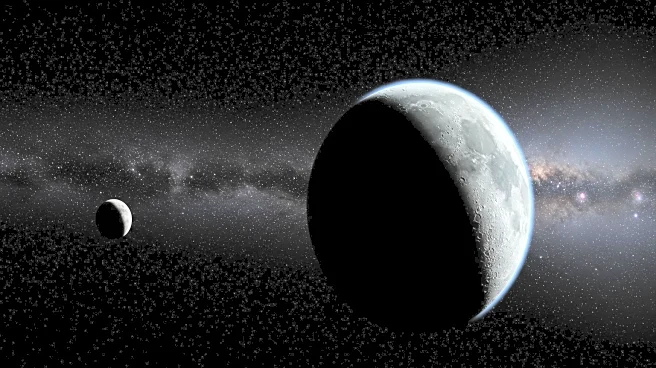What is the story about?
What's Happening?
Mercury, the smallest planet in the solar system, will be visible at its greatest elongation on August 19, 2025. This astronomical event occurs when Mercury is at its farthest distance from the sun as seen from Earth, making it easier to observe due to reduced solar glare. The phenomenon, known as the greatest elongation, happens approximately every four months. On this occasion, Mercury will be at its greatest western elongation, best viewed in the morning just before sunrise. Observers are advised to look towards the sunrise as the sky brightens, but should avoid pointing binoculars or telescopes directly at the sun to prevent eye damage.
Why It's Important?
The greatest elongation of Mercury provides a unique opportunity for astronomers and enthusiasts to observe the planet, which is typically difficult to see due to its proximity to the sun. This event highlights the dynamic nature of planetary movements and offers educational insights into celestial mechanics. For the scientific community, such occurrences can aid in the study of planetary atmospheres and orbital dynamics. Additionally, public interest in astronomy can be stimulated by these events, fostering a greater appreciation for space science and potentially inspiring future generations of astronomers.
What's Next?
Following the greatest western elongation on August 19, Mercury will reach its greatest eastern elongation on October 29, 2025, making it most visible in the evening after sunset. These regular occurrences allow for continued observation and study of Mercury's orbit and characteristics. As interest in space exploration grows, events like these may lead to increased public engagement and educational initiatives focused on astronomy.
Beyond the Headlines
The frequent elongations of Mercury, occurring six or seven times a year, contrast with other planets like Venus, which only reach greatest elongation twice annually. This difference is due to Mercury's closer orbit to the sun, offering insights into the varied orbital dynamics within our solar system. Understanding these patterns can contribute to broader knowledge of planetary behavior and the influence of solar proximity on visibility and observation.
AI Generated Content
Do you find this article useful?





